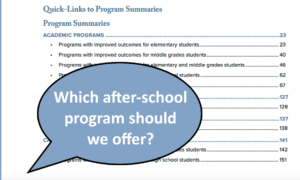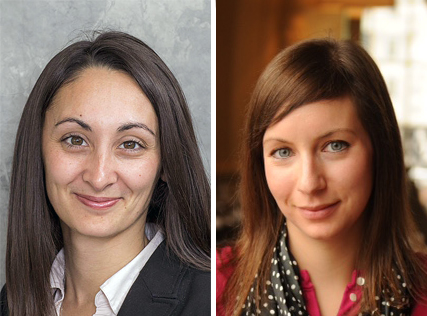WASHINGTON — The federal government’s attempts to bring consistency and standards to public education across the country have often clashed with the reality facing educators trying to meet those standards. The challenge is even greater for those working with teens locked behind bars or struggling to deal with years of physical and emotional trauma.
A conference sponsored by the Coalition for Juvenile Justice last week in Washington provided a forum for a lively — at times testy — debate over juvenile justice provisions of the Every Student Succeeds Act, the latest government plan to improve outcomes and increase accountability at the state level.
A key issue was an ESSA provision mandating, for the first time, that states submit detailed plans designed “to provide parents with quality, transparent information about how … ESSA, will be implemented in their State,” according to the U.S. Department of Education website. The goal is to create minimum standards that all states must meet.
As an expert panel highlighted existing programs and offered tips to help states preparing their plans, several juvenile justice educators and advocates jumped in to offer what they called a dose of reality. Under the federal plan, there is no leniency or acknowledgment of the special challenges facing students locked in detention facilities or the educators trying to help them.
“Everyone in this room cares about these kids and helping them get the best outcomes and education possible. That’s the only reason we do this,” said Maureen Montgomery, the education administrator for the Muskingum County Juvenile Detention Center in Ohio. “But let’s be honest, how can you have these standards they expect us to meet when we have kids who come in for 25 days at a time? Or when they are just pulled away without any notice to go to court or see a judge?
“And how are these standards going to help with the fact that too many school districts just use juvenile detention facilities as a dumping ground where they throw the worst public school teachers because unions say they can’t get rid of them?” Montgomery said, drawing applause from others in the audience.
Jennifer Brown Lerner, who led the panel discussion, had the difficult task of convincing the experts in attendance that ESSA, passed in 2015 with broad bipartisan support as an update to the No Child Left Behind Act, provides great flexibility. As deputy director of the American Youth Policy Forum, a nonprofit based in Washington, D.C., she and her colleagues have helped many states form their plans.
Although Lerner was limited by confidentiality from revealing too much of those interactions, she did direct conference participants to a Department of Education website where submissions from 17 states are available to view. None of those plans, submitted within the past 60 days, have been approved so far. The remaining states must submit their plans later in the year.
[Related: Personalized Restorative Justice Best Way to Teach Traumatized Students, Conferees Told]
But at its core, ESSA makes states “responsible for collecting, tracking and sharing related to student education progress and outcomes,” according to a fact sheet provided to participants by the American Youth Policy Forum. That information will be crucial for educators working to help bring better outcomes to students in juvenile detention facilities.
“I get that a lot of people see that everything that arises from Washington is abundantly restrictive. I understand that,” Lerner said. “But there is a lot of flexibility and the ability for states to share ideas and learn from each other. That’s why the data collection and sharing requirements are going to be so important as this gets implemented and improved on over the next few years.”
During the session, representatives from Florida talked about several innovative approaches, including using Title 1 federal grants — federal money targeted for low-income families — to help improve education for students in the juvenile justice system. The state of Illinois is creating a single education district that will cater to all students in the juvenile justice system, no matter what city or region they are from.
But the presentation by Lerner and her fellow panelists couldn’t ease the skepticism, and at times anger, of some in attendance.
“You can talk about accountability and standards and all of that, but you tell me how you are going to measure a 16-year-old kid in the system who reads at the third-grade level,” said one woman, who works in the juvenile justice system in Washington, D.C.
“Metrics are fine, and I’m not saying schools shouldn’t be held accountable,” said the woman, who didn’t give her name. “But if you want to measure things, measure improvement. Track how much they improve in the two or three or whatever months we have them. What we really have to give them is hope. Let them know that when they go back home to the streets they have learned enough to have a chance.”
And with that, the woman stormed out of the conference room as many nodded in agreement.
At the end of Lerner’s presentation, many in attendance said they felt more confident that the federal government was giving them more flexibility than they expected. Most vowed to read the 17 state plans already submitted.
Cyndy Pierce, juvenile justice program coordinator of the Office of Youth Services in Honolulu, Hawaii, said discussions such as ESSA and many others at the Coalition for Juvenile Justice conference are important because they force all parties to pool their ideas in the quest to help educate youth in the juvenile justice system.
“I really believe that all of the federal mandates and programs are done with the best intentions, but I am not sure people in Washington can really understand what is going on day after day,” Pierce said. “I think there has been an ivory tower approach, where Washington knows best. But this week, talking to other experts and meeting with lawmakers, I think people are starting to listen to the people who are on the ground.”































